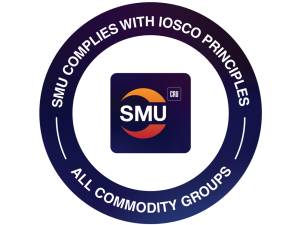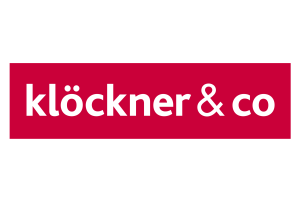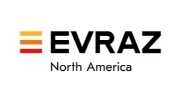
SMU Price Ranges: Sheet floor holds as market debates upside
Our average HR coil price increased $5/short ton from last week, marking a second consecutive week of modest gains. Market participants generally attributed the increase to...


Our average HR coil price increased $5/short ton from last week, marking a second consecutive week of modest gains. Market participants generally attributed the increase to...
SMU’s HR price stands at $800/st on average, up $5/st from last week. The modest gain came as the low end of our range firmed, and despite the high end of our range declining slightly.

SMU has successfully completed an external review of all our prices. The review has concluded that they algin with principles set by the International Organization of Securities Commissions (IOSCO).

There are days when this feels like a “nothing ever happens” market. Don’t get me wrong. Plenty is happening in the world. It’s just that none of it seems to matter when it comes to sheet and plate prices.

Usually, I write about steel in this column because, well, we’re Steel Market Update. But before I get to steel, I want to give a shoutout to my colleagues at Aluminum Market Update (AMU) – SMU’s new sister publication.

If I could change something, it’d be this: Political news would get more boring. And news about steel prices and steel demand would get a little more exciting.

SMU’s sheet and plate prices see-sawed this week as hot-rolled (HR) coil prices held their ground while prices for galvanized product slipped.

SMU’s latest survey results indicate that steel market participants think sheet prices are at or near a bottom. But most also think there is limited upside once they inflect higher.

We moved our pricing momentum indicators from “lower” to “neutral” for all sheet products this week. For those keeping score, we had been at “lower” for six weeks. And I know some of you think we should have been there for even longer.

Market participants predicted that prices should be at or near a bottom. But while most seemed to agree on that point, many also said they saw little upside given a quiet spot market and ongoing concerns about demand.

German service center Klöckner and Co. has agreed to sell seven of its US locations to Canadian service center Russel Metals Inc. for approximately $119 million, the companies said in press releases on Sunday.

Algoma Steel has publicly confirmed that it might scale back its presence in the US market. It's no secret why: 50% Section 232 tariffs remain in place against Canada, which has traditionally been one of our closest allies.
Canadian flat-rolled steelmaker Algoma Steel is reconsidering its presence in the US market after the doubling of US Section 232 tariffs on imported steel to 50%, a company spokeswoman said.

Sheet and plate prices were flat or lower this week as less discounting from domestic mills was offset by few signs of an anticipated rebound in demand.

But, for better or worse, there is not a major political party championing unfettered free markets. While Democrats and Republicans don’t agree on much, both have cheered tariffs on steel. And so if you’re going to handicap any future decision on Granite City’s operations, including its blast furnaces, you’d better factor in politics at least as much as economics.
U.S. Steel said it would continue to roll slabs at its Granite City Works mill near St. Louis, reversing a previous decision to end production at the plant in November. “U.S. Steel will continue to supply slabs to Granite City. As we shared earlier, our goal was to maintain flexibility, and we are pleased to have found a solution to continue to slab consumption at Granite City,” a company spokesperson said in a statement to SMU.

SMU’s price ranges were mixed again this week as the market continues to seek a floor amid industry hopes for a Q4 rebound.

Sheet prices were mixed this week as some mills continued to offer significant discounts to larger buyers while others have shifted toward being more disciplined, market participants said.
U.S. Steel said it plans to reduce slab consumption at its Granite City Works near St. Louis, a company spokesperson said on Monday. The Pittsburgh-based steelmaker will shift the production and processing of steel slabs to its Mon Valley Works near Pittsburgh and its Gary Works near Chicago. Citing a United Steelworkers (USW) union memo, […]

A recurring theme in conversations with some of you and in the comments submitted in our surveys is concerns about demand and uncertainty around tariffs. Where does SMU’s latest opinion polling on President Trump’s tariffs stand? Let’s take a look at the numbers.

I’ve been getting some calls lately from some of you who want to kick around ideas on where prices might bottom and when.

SMU’s hot-rolled (HR) coil price held steady this week while prices for other sheet and plate products declined.

Another record-breaking SMU Steel Summit is in the books. Thanks to all of you – attendees, speakers, sponsors, and exhibitors – for making it possible it in what has been an uncertain year for steel.

The big show is here again. SMU Steel Summit begins on Monday. This year, like last year, more than 1,500 people will be joining us. And I couldn’t be more excited to have everyone here in Atlanta.

With SMU Steel Summit starting in just a few days, I decided to go back and do a quick check on where things stand now compared to the week before Summit last year.

Sheet and plate prices were flat or lower again this week on continued concerns about demand and higher production rates among US mills.

Veteran trade attorney Lewis Leibowitz will join SMU for a Community Chat on Wednesday, Aug. 13, at 11 am ET.

Sheet and plate prices were either flat or modestly lower this week on softer demand and increasing domestic capacity.

We’re in the dog days of summer, and the question is whether the market will improve as lead times stretch into September. Your answer to that question might depend on where you are in the supply chain. And producers, it seems to me, are a lot more optimistic than consumers at the moment.

Atlas Holdings has completed its acquisition of Evraz North America (Evraz NA) and its subsidiaries.